Abstract
Highly potent photoaffinity probes for muscarinic binding sites were prepared by the incorporation of an azido group into the benzilic acid moiety in two compound, 3-quinuclidinyl benzilate (3QNB) and N-methyl-4-piperidyl benzilate (4NMPB). Inactivation of muscarinic sites in rat cortex depends on the formation of a reversible complex with the azides prior to their photolytic conversion to the highly reactive nitrenes. During photolysis, radiolabeled azido-4NMPB interacted specifically and with high affinity (Kd = 1.06 nM) with the muscarinic receptors, and the ligand could be covalently incorporated into a macromolecule of about 86,000 Mr, presumably the muscarinic receptor. The incorporation was almost stoichiometric when compared to determination of receptor density by reversible ligands. Atropine (10 microM) afforded specific protection (greater than 83%) of the receptor against inactivation by azido-[3H]4NMPB. This compound and the other ligands described here (i.e., amino-4NMPB, amino-3QNB, and azido-3QNB) represent powerful potential probes for the biochemical isolation and characterization of muscarinic receptors.
Full text
PDF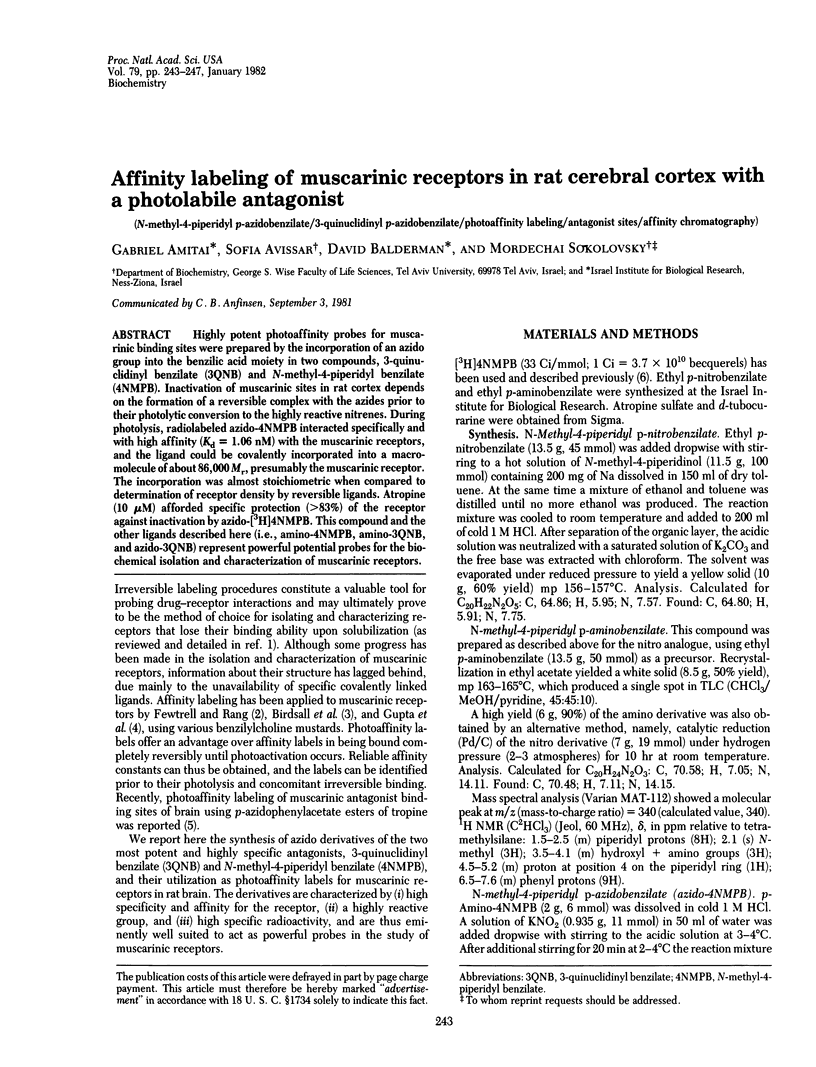
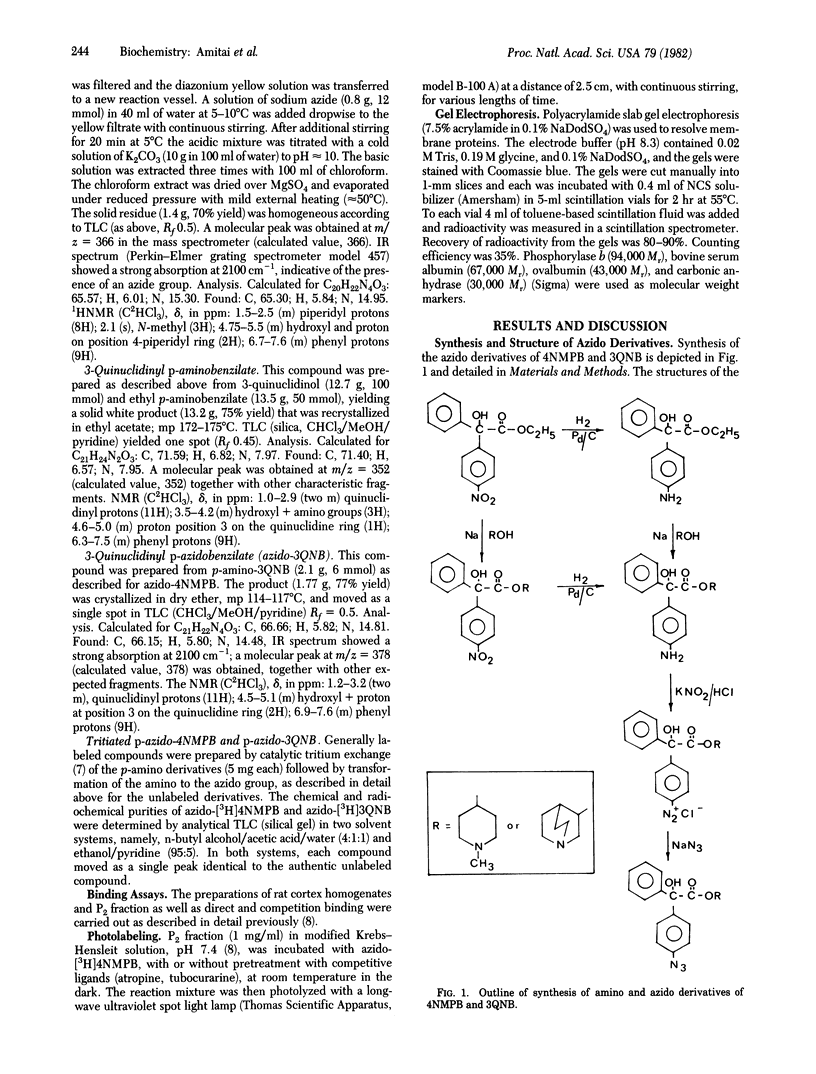
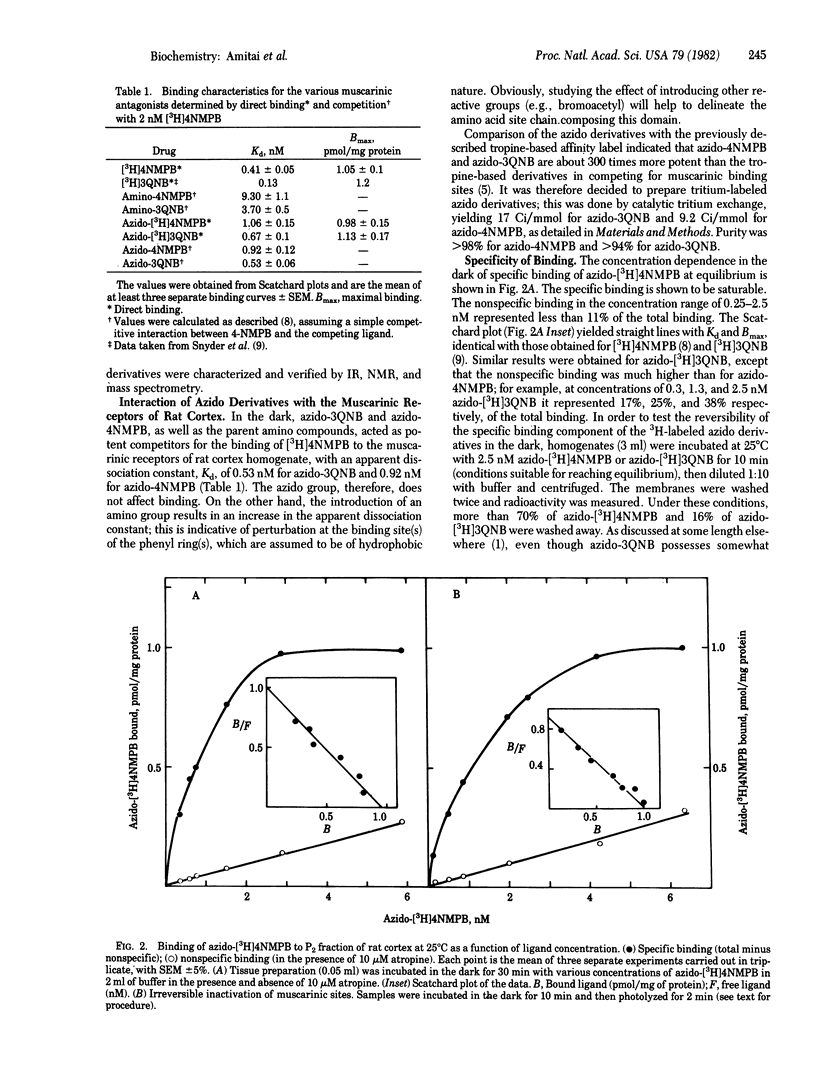
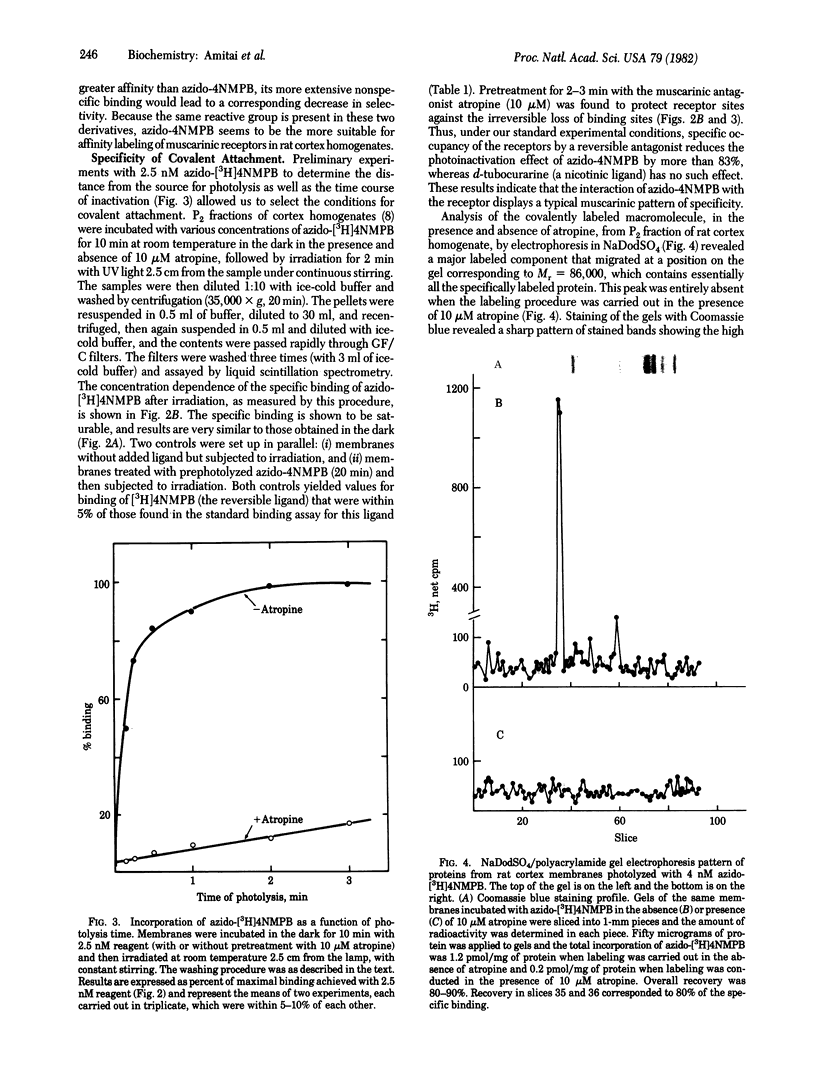
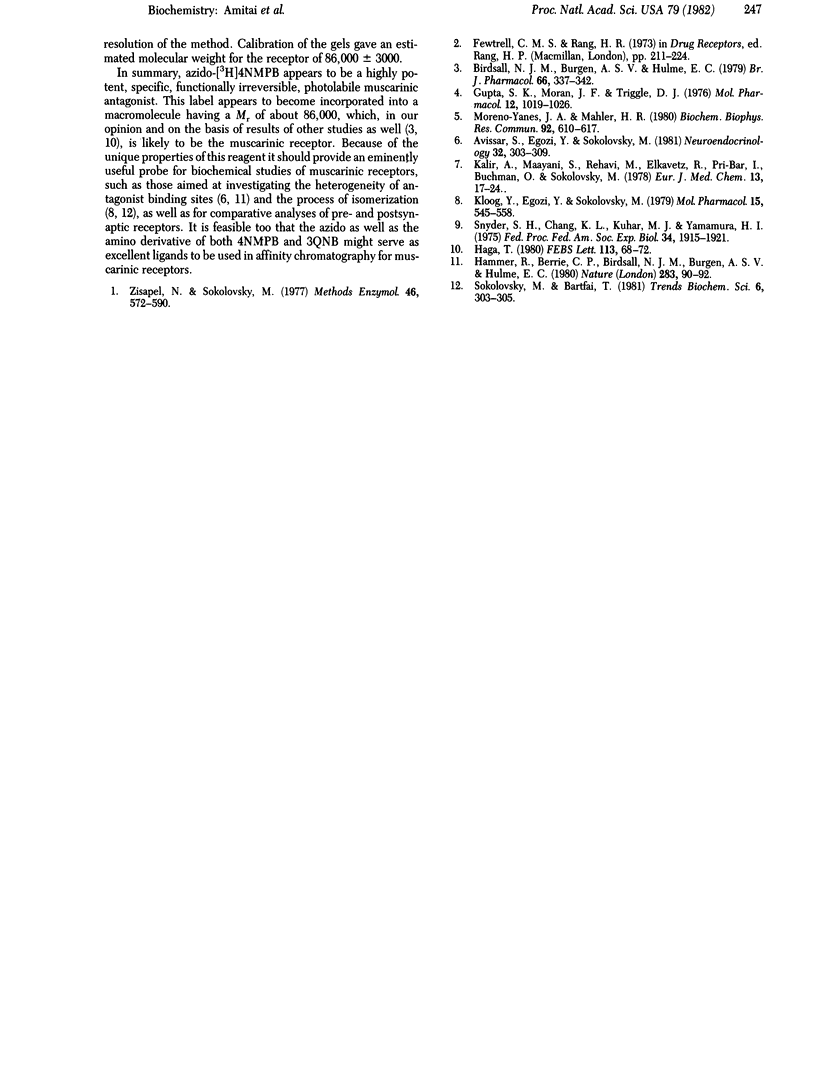
Images in this article
Selected References
These references are in PubMed. This may not be the complete list of references from this article.
- Avissar S., Egozi Y., Sokolovsky M. Biochemical characterization and sex dimorphism of muscarinic receptors in rat adenohypophysis. Neuroendocrinology. 1981 May;32(5):303–309. doi: 10.1159/000123176. [DOI] [PubMed] [Google Scholar]
- Birdsall N. J., Burgen A. S., Hulme E. C. A study of the muscarinic receptor by gel electrophoresis. Br J Pharmacol. 1979 Jun;66(2):337–342. doi: 10.1111/j.1476-5381.1979.tb13685.x. [DOI] [PMC free article] [PubMed] [Google Scholar]
- Gupta S. K., Moran J. F., Triggle D. J. Mechanism of action of benzilylcholine mustard at the muscarinic receptor. Mol Pharmacol. 1976 Nov;12(6):1019–1026. [PubMed] [Google Scholar]
- Haga T. Molecular size of muscarinic acetylcholine receptors of rat brain. FEBS Lett. 1980 Apr 21;113(1):68–72. doi: 10.1016/0014-5793(80)80497-2. [DOI] [PubMed] [Google Scholar]
- Hammer R., Berrie C. P., Birdsall N. J., Burgen A. S., Hulme E. C. Pirenzepine distinguishes between different subclasses of muscarinic receptors. Nature. 1980 Jan 3;283(5742):90–92. doi: 10.1038/283090a0. [DOI] [PubMed] [Google Scholar]
- Kloog Y., Egozi Y., Sokolovsky M. Characterization of muscarinic acetylcholine receptors from mouse brain: evidence for regional heterogeneity and isomerization. Mol Pharmacol. 1979 May;15(3):545–558. [PubMed] [Google Scholar]
- Moreno-Yanes J. A., Mahler H. R. Photaffinity labeling of specific muscarinic antagonist binding sites of brain: I. Preliminary studies using two p-azidophenylacetate esters of tropine. Biochem Biophys Res Commun. 1980 Jan 29;92(2):610–617. doi: 10.1016/0006-291x(80)90377-0. [DOI] [PubMed] [Google Scholar]
- Snyder S. H., Chang K. J., Kuhar M. J., Yamamura H. I. Biochemical indentification of the mammalian muscarinic cholinergic receptor. Fed Proc. 1975 Sep;34(10):1915–1921. [PubMed] [Google Scholar]
- Zisapel N., Sokolovsky M. Affinity labeling of receptors. Methods Enzymol. 1977;46:572–582. doi: 10.1016/s0076-6879(77)46071-3. [DOI] [PubMed] [Google Scholar]



